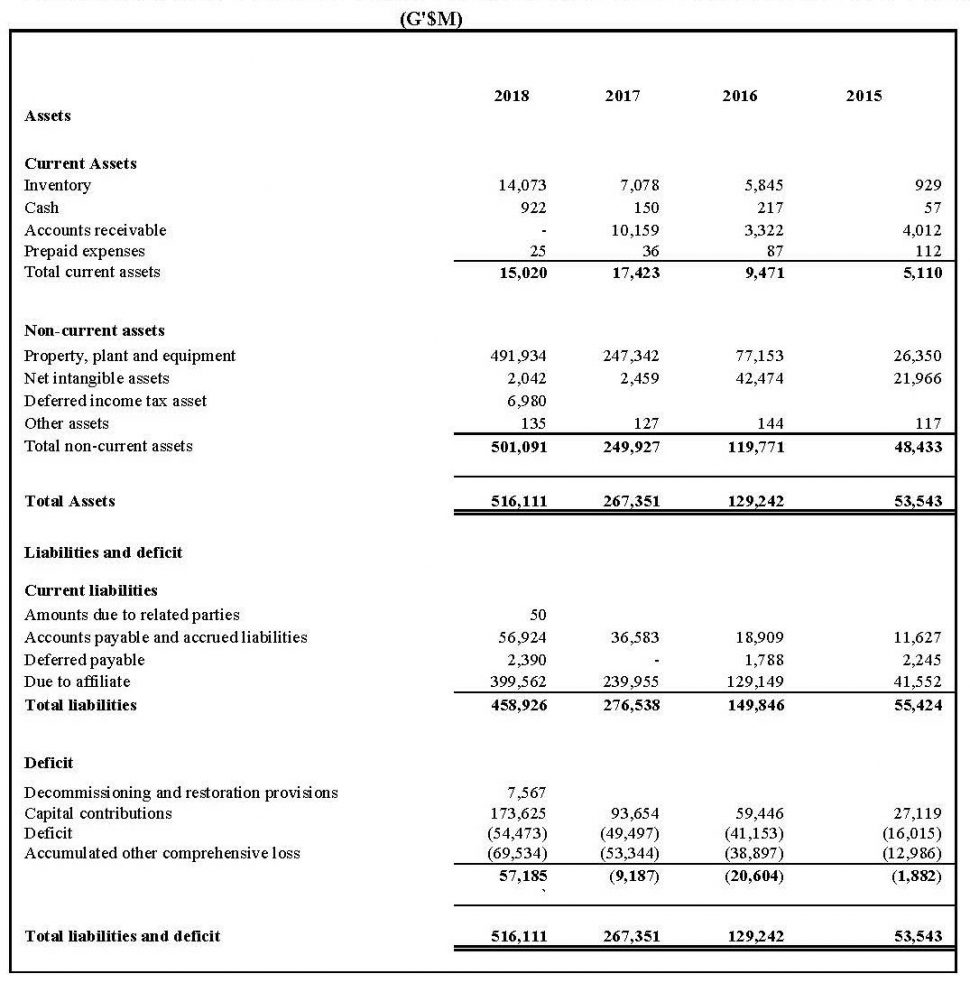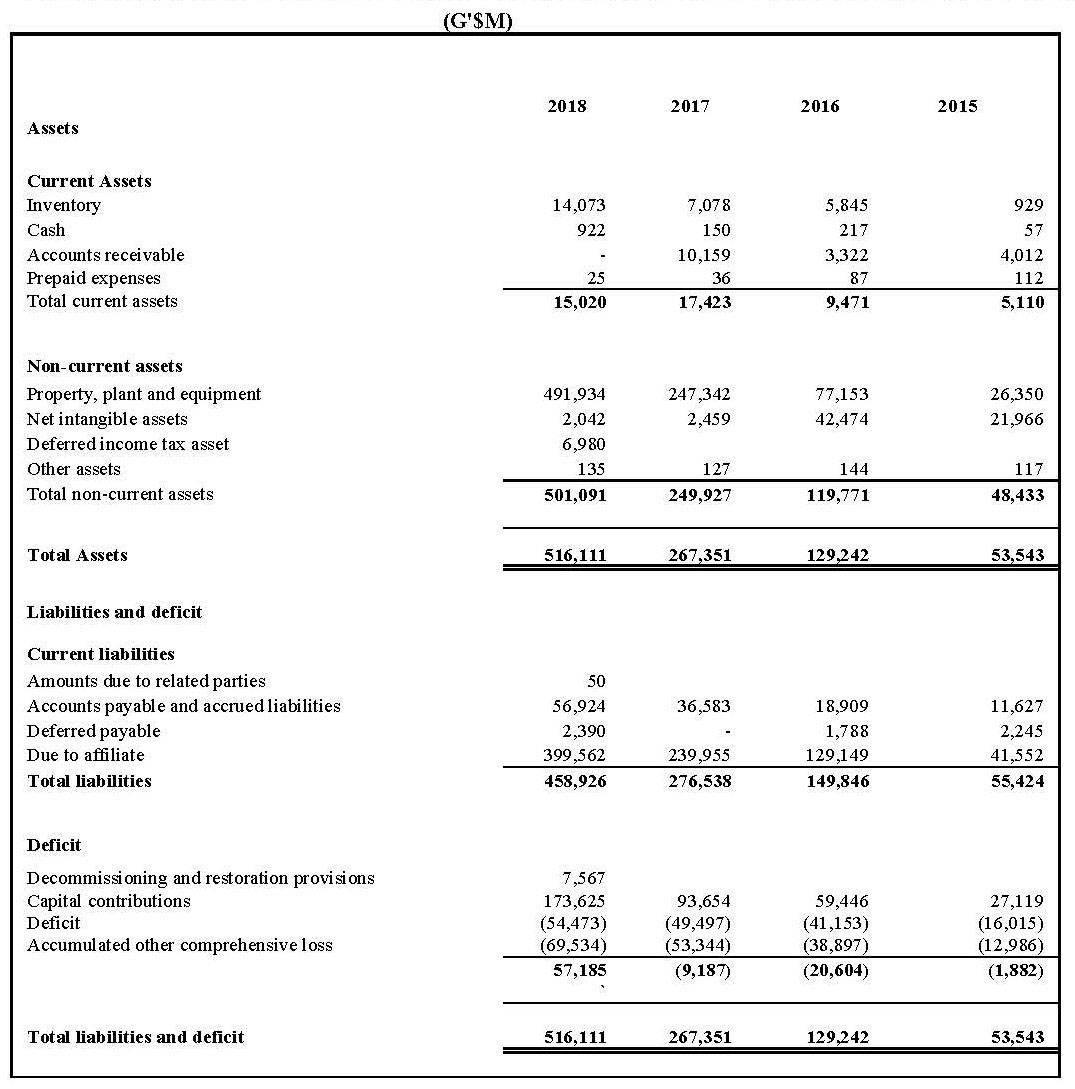
Combined Statement of Financial Position of Esso/CNOOC and Hess for the Years ended 31 December 2015 to 2018
Source: Companies Audited Financial Statements
Another major difference is how the three companies account for the most significant item in their financial statements – exploration cost. Let us see how each of these companies, all enjoying the status of Contractors account for and describe those critical costs.
Esso
Esso which has a 45% interest in the Agreement, is the only company that uses the label “intangible assets and wells” in the notes to its financial statements, although confusingly, the exact term does not appear on the face of the financial statements. It notes that the Branch uses the “successful efforts” method to account for its exploration and production activities and goes on to state that the Branch carries as asset explorations well cost when the well has found a sufficient quantity to justify its completion as a producing well and where the Branch is making sufficient progress assessing the reserves and the economic and operating viability of the project. Exploratory well cost not meeting these criteria are charged to expenses. Other Exploratory expenditures, including geophysical cost and annual lease rental, are expensed as incurred.
And under the heading Deferred Expenditure, the note states that “Expenditures incurred during the exploration stage and pre-full funding expenditures are written off in the year they are incurred.”
CNOOC
The financial statements of CNOOC on the other hand disclose that it carries exploratory well costs as an asset when the well has found a sufficient quantity of reserves to justify its completion as a producing well and where the branch is making sufficient progress assessing the reserves and the economic and operating viability of the project. Exploratory well costs not meeting these criteria are charged to expenses. Exploratory wells that potentially have economic reserves in areas where major capital expenditure will be required before production would begin and when the major capital expenditure depends upon the successful completion of further exploratory work remain capitalized and are reviewed periodically for impairment.
This 30% interest holder discloses that Oil exploration and evaluation expenditures are accounted for using the ‘successful efforts’ method of accounting. Costs of acquiring rights to explore, develop and produce oil and gas (leasehold costs) are capitalized. Geological and geophysical costs are expensed as incurred. The cost of exploratory wells that find oil and gas reserves are capitalised pending determination of whether proved reserves have been found.
The extract from Hess seems to lend support to the widely-held view that it paid Esso for the opportunity to get in on the deal of the century and my own contention that Esso’s pre-contract cost should have been reduced by whatever payment it received from Hess and CNOON/Nexen.
Other differences
Another difference of some significance is that of the three companies only CNOOC/Nexen actually recognises Deferred Taxation as a credit in its Income Statement and a Receivable in its Balance Sheet. Hess has taken a more conservative approach, preferring to recognise a deferred tax asset only to the extent that future profits will be available to utilise any temporary differences can be utilised.
CNOOC is also the only one of the three companies which has provided for Decommissioning and Restoration Provision. Such figures are not likely to be insignificant with CNOOC already providing some $7,567 million.
Conclusion
It is at the minimum mystifying that three companies which have joined to sign a single agreement, operate in the same Contract Area and which no doubt share some common reporting responsibility can have financial statements with such differences. I believe that there will be more than a fair share of confusion when the time comes for computing cost oil and profit oil.
In next week’s column I will review and comment on the combined balance sheets of the three companies which show total assets of G$516,111 million dollars at December 31, 2018. Converted to US$, that amounts to roughly US$2,500 million or US$2.5 billion. This means that it will be a few years before such costs are fully recovered. Effectively therefore, for those years, Guyana will have to be content with receiving a mere 14.25% of gross petroleum revenue.






